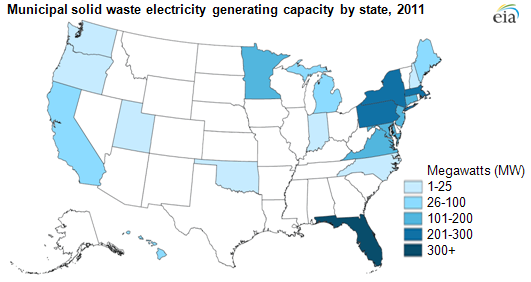
Municipal solid waste plants convert garbage to electricity

Waste-to-energy plants burn municipal solid waste (MSW) to generate electricity or heat. At the plant, MSW is unloaded from collection trucks and shredded or processed to ease handling. The waste is fed into a combustion chamber to be burned. The heat released from burning the MSW is used to produce steam, which turns a turbine to generate electricity.
In 2011, there were 75 waste-to-energy plants operating in 20 states, with a total electric generating capacity of 2,238 megawatts. During the same year, waste-to-energy plants generated approximately 14 million megawatthours of electricity from MSW, or about 0.3% of total U.S. generation, which was roughly the same as geothermal electricity generation in the United States.
According to the U.S. Environmental Protection Agency, waste-to-energy plants combusted about 29 million tons of MSW for energy recovery in the United States in 2010, which is about 12% of total domestic MSW. Approximately 34% of MSW was recycled or composted, and the remaining 54% of MSW was discarded in landfills.